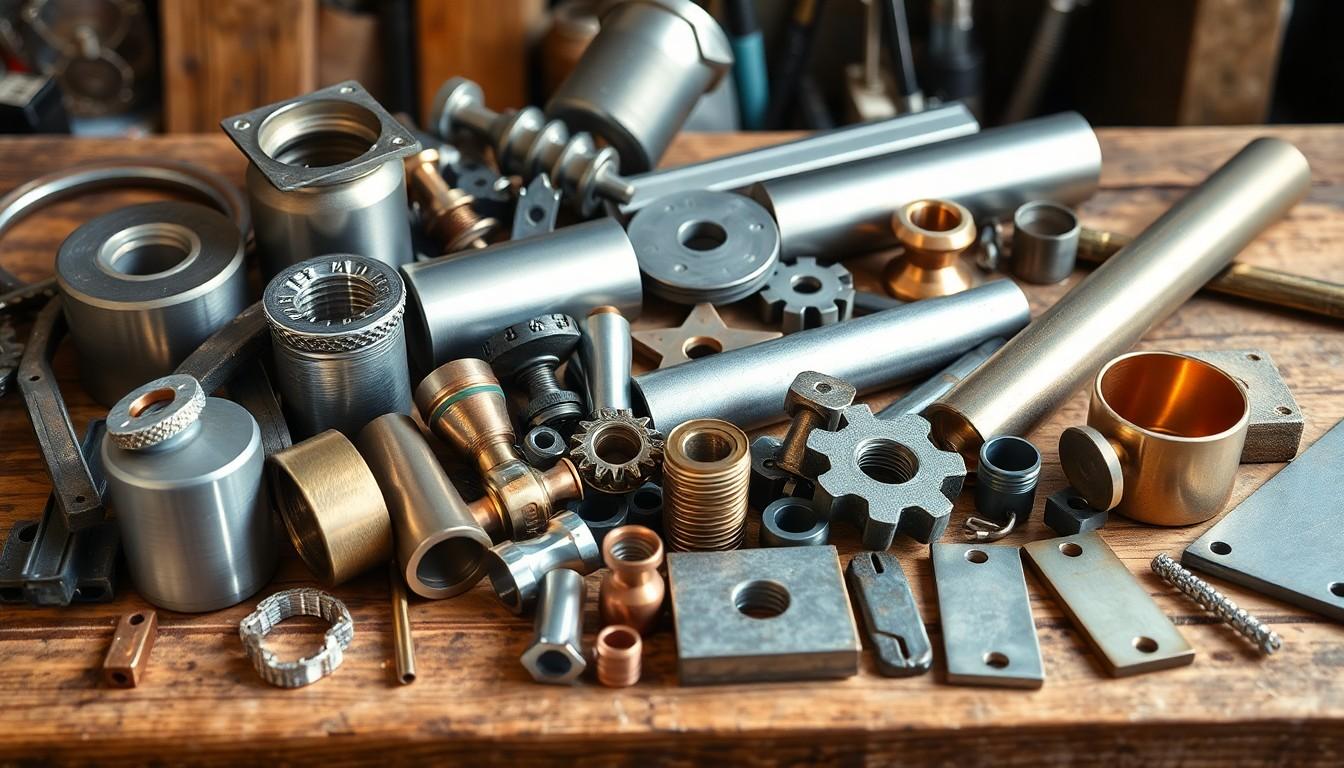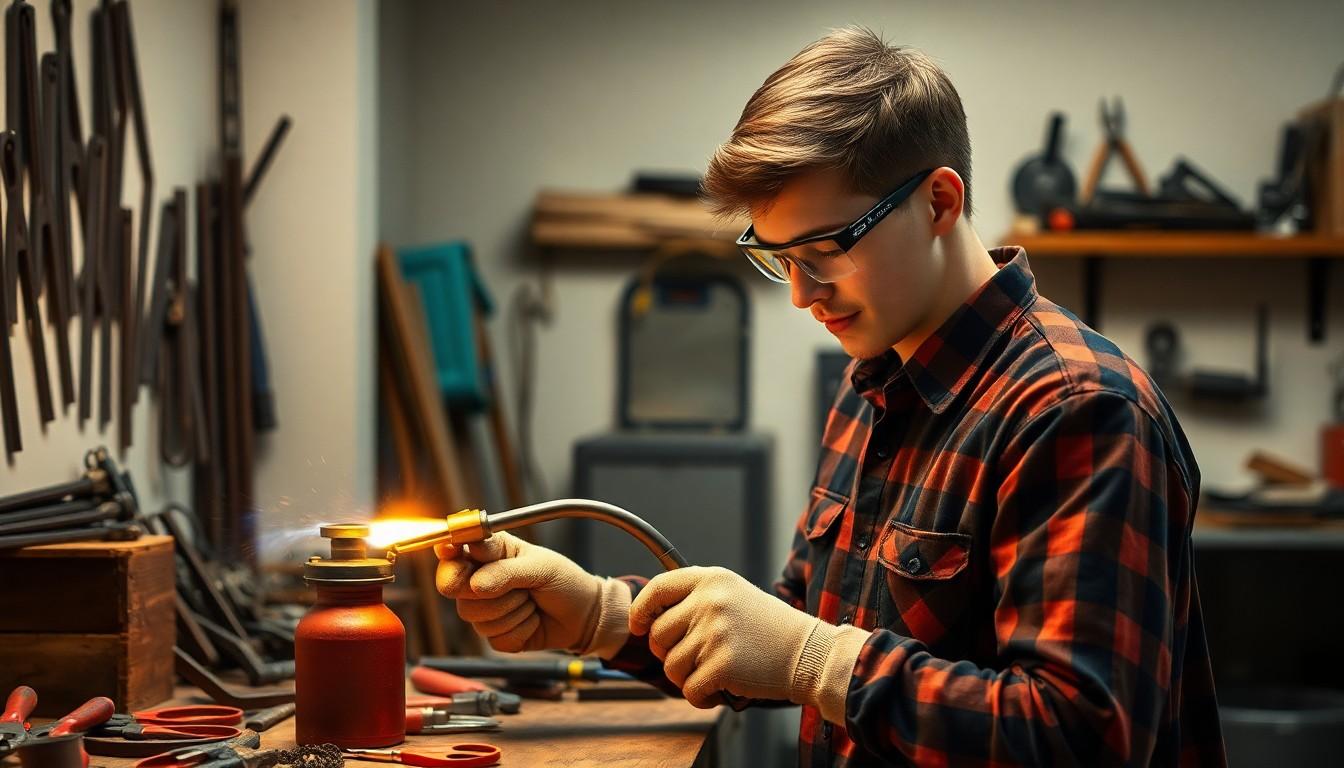Cutting metal at home without tools might sound like a magician’s trick, but it’s more about creativity than sorcery. Imagine transforming a hunk of metal into a work of art or a functional piece without the need for a workshop full of gadgets. It’s possible, and it can be surprisingly fun!
Table of Contents
ToggleOverview of Metal Cutting
Cutting metal at home without tools challenges traditional methods. Creativity plays a vital role in achieving successful results. Various techniques allow individuals to manipulate metal effectively. Techniques include methods like scoring, snapping, and bending.
Scoring involves creating a groove on the metal surface. A sharp object, such as a utility knife or glass cutter, serves as an effective scoring tool. The groove needs to penetrate the metal sufficiently for easy snapping. Once the line is scored, applying pressure can break the metal along that line.
Bending offers another approach, especially for thin metals. By applying consistent, even pressure, bending shapes or angles can be accomplished. This method works well for sheet metal projects where precision isn’t critical.
Heating provides a means to soften metal for easier cutting. Using a propane torch, individuals heat specific sections until they become malleable. Once soft, bending or manipulating the metal becomes significantly simpler.
Using household items can sometimes serve as an alternative. For example, strong pliers can grip and twist thin strips of metal. Similarly, sawing with a sturdy piece of wood can be effective for softer metal types.
Safety remains a top priority. Wearing protective gloves and eyewear reduces the risk of injury. Ensuring a well-ventilated area is essential while working with heated metal.
Emphasizing artistic expression adds an exciting dimension to metal cutting. By exploring these unconventional methods, individuals can create unique pieces that reflect their creativity and resourcefulness.
Understanding Different Types of Metal

Metals serve various functions in homes, and understanding them enhances projects. Individuals often encounter multiple metal types, each with unique properties and characteristics.
Common Metals Used at Home
Aluminum ranks high as a lightweight metal, frequently utilized in kitchenware and furniture. Steel, known for strength, appears in appliances and structural components. Copper offers excellent conductivity and finds its place in wiring and plumbing. Brass, a combination of copper and zinc, is often chosen for decorative elements and fittings. These metals provide versatility in crafting, making them popular choices for home projects.
Properties of Metals to Consider
Specific properties dictate which metal suits a project best. Strength influences durability; for example, steel supports heavy loads while aluminum is lighter but less robust. Conductivity plays a crucial role in electrical applications; copper excels in transmitting electricity. Corrosion resistance proves vital for outdoor projects; stainless steel and aluminum withstand elements better than others. These considerations guide choices, ensuring optimal results in metal-related tasks.
Techniques for Cutting Metal Without Tools
Cutting metal at home without tools relies on inventive methods. Two effective approaches include utilizing heat and employing chemical processes.
Method 1: Using Heat
Applying heat is an effective way to cut metal. A propane torch is useful for softening the material, allowing for easier manipulation. Concentrating the flame on a specific area creates sufficient heat to weaken the metal. Once heated, one can bend or break the metal along a predetermined line. This method works best with softer metals such as aluminum or copper. Always remember to wear protective gear, including gloves and goggles, while working with fire. Proper ventilation ensures a safer working environment.
Method 2: Chemical Cutting
Using chemicals for cutting metal offers a unique solution. Certain chemicals, like rust removers and acid-based solutions, can effectively corrode specific metals. When applying these substances, a person should follow the manufacturer’s instructions closely for safety. The metal weakens through chemical reactions, allowing the material to break apart more easily. Some common chemicals used include muriatic acid for steel and vinegar for aluminum. Safety precautions, such as gloves and masks, are essential to prevent skin and respiratory irritation. This method may take longer than physical cutting but offers a precise approach.
Safety Precautions
Ensuring safety during metal cutting is essential. Wear gloves to protect hands from sharp edges. Safety goggles shield the eyes from flying debris. A mask can prevent inhalation of harmful fumes, especially when heating metal.
Ventilation plays a crucial role in maintaining a safe workspace. Open doors and windows to allow airflow when using a propane torch or chemical solutions. Keep a fire extinguisher on hand in case of emergencies. It’s important to work away from flammable materials to minimize fire hazards.
Awareness of surroundings enhances safety. Identify potential hazards and remove unnecessary items from the workspace. Use stable surfaces to avoid accidents during cutting. When employing chemical processes, follow the manufacturer’s instructions and use appropriate containers.
Communication is vital when working in shared spaces. Inform others of ongoing projects and potential dangers. If possible, work with a partner who can assist in case of emergency situations. Familiarity with emergency procedures can further enhance safety during projects.
Proper handling and storage of materials reduce risks. Store chemicals according to safety guidelines in well-labeled containers. Dispose of metal scraps and other waste properly to avoid injuries. Always clean the workspace after completing a project, eliminating hazards for future work.
Ultimately, safety remains a top priority when cutting metal at home without tools. By following these precautions, individuals can enjoy their creative projects while minimizing risks.
Tips for Success
Use a stable surface for cutting metal, ensuring it remains secure throughout the process. Establishing a flat work area prevents movement and enhances safety. Choose suitable metals for your projects; softer metals like aluminum and copper work well with home techniques. Observe the metal characteristics before applying methods like scoring or heating.
Engage in scoring with precision. Create a shallow groove using a sharp object, making it easier to snap the metal along the line. Apply consistent pressure to avoid jagged edges. Utilize pliers or wooden blocks as leverage when bending to achieve smooth transitions.
Consider heating metal carefully. Employ a propane torch to soften specific sections, facilitating more straightforward cuts. Monitor the temperature closely to prevent overheating, which can lead to unwanted damage. Always work in a well-ventilated area, as harmful fumes may arise during the heating process.
Focus on using chemicals for cutting with caution. Choose rust removers or acid-based solutions based on the metal type. Conduct small tests first to gauge effectiveness and adjust as needed for corrosion. Remember to wear protective gear, including gloves and goggles, when handling chemicals.
Stay aware of surroundings during projects. Keep a fire extinguisher nearby as a precaution when working with heat or chemicals. Communicate with others in shared spaces to maintain a safe environment. By following these tips, individuals can successfully cut metal at home without traditional tools while emphasizing safety and creativity.
Cutting metal at home without traditional tools opens up a world of creative possibilities. By employing techniques like scoring bending and heating individuals can transform metal into unique pieces without the need for expensive equipment. This approach not only fosters artistic expression but also encourages resourcefulness.
Safety remains paramount throughout the process. Wearing protective gear and working in a well-ventilated area ensures a secure environment for any project. By understanding the properties of different metals and using household items effectively anyone can embark on their metalworking journey with confidence.
Ultimately this innovative method allows for personal expression while demonstrating that creativity doesn’t require a fully equipped workshop. With a little imagination and the right techniques anyone can enjoy the satisfaction of crafting metal projects at home.




